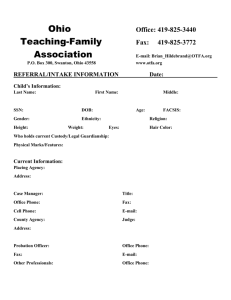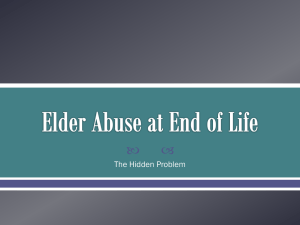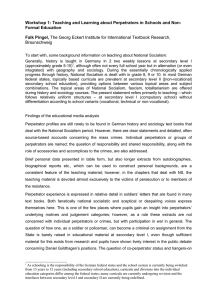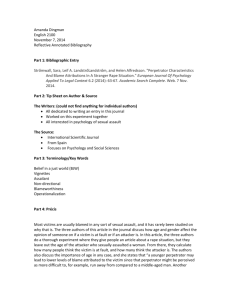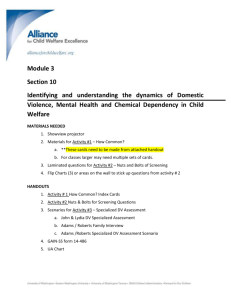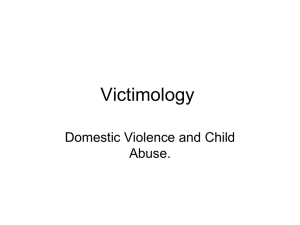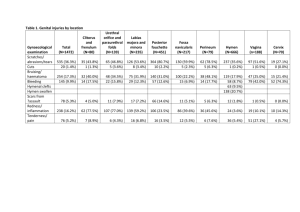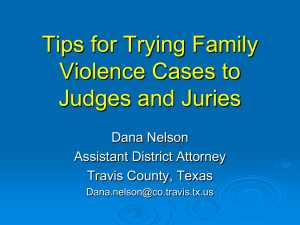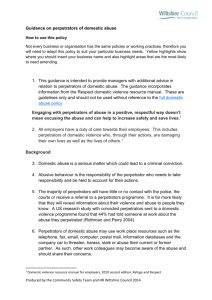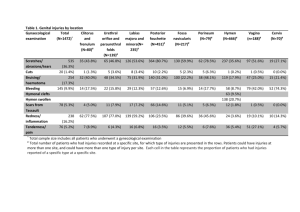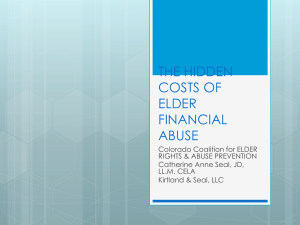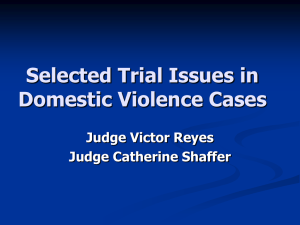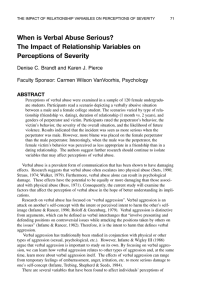Advocating for Children in the Court System
advertisement
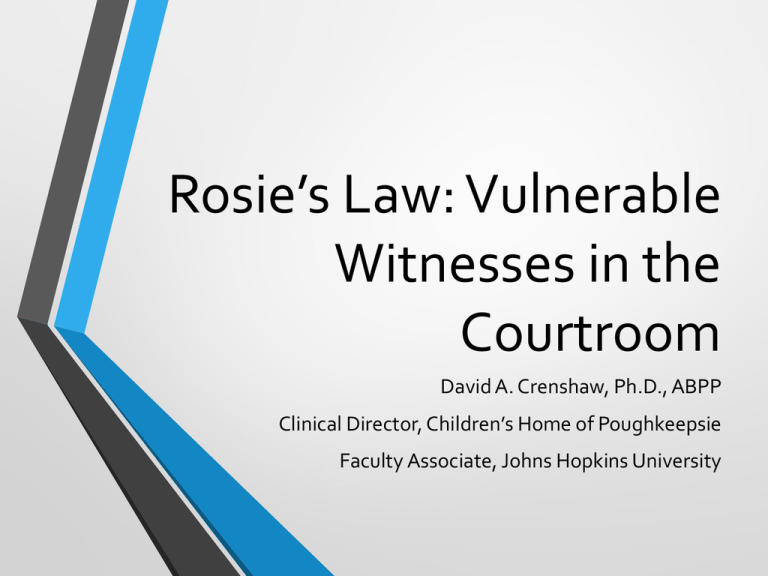
Rosie’s Law: Vulnerable Witnesses in the Courtroom David A. Crenshaw, Ph.D., ABPP Clinical Director, Children’s Home of Poughkeepsie Faculty Associate, Johns Hopkins University The Courtroom Poses Psychological Risks for the Child-Victim • “Indeed, if one set out intentionally to design a system for provoking symptoms of posttraumatic stress disorder, it might look very much like a court of law”(Herman, 2003, p.159; also see Thoman, 2014). Conflicts between Child-Victim Needs and Requirements of the Legal System • “Victims need an opportunity to tell their stories in their own way, in a setting of their choice; the court requires them to respond to a set of yes-no questions that break down any personal attempt to construct a coherent and meaningful narrative” (Herman, 2003, p. 160). Conflict of Needs (continued) • “Victims often need to control or limit their exposure to specific reminders of the trauma; the court requires them to relive the experience by directly confronting the perpetrator” (Herman, 2003, p. 160) Children in the Legal System • “Child sexual abuse (CSA) is by far the most likely cause of children’s becoming involved as witnesses with criminal courts” (Goodman, 2005, p. 873). • Abused children are most at risk when testifying because the legal process itself is a traumatic reminder (Saxe, Ellis, & Kaplow, 2009, p. 81). Child Witnesses and the Confrontation Clause • Thomas D. Lyon, J.D., Ph.D., Chair in Law and Psychology at the University of Southern California and his co-author Julia A. Dente, J.D. (2012, p. 1181) argue that courts should hold that defendants have forfeited their constitutional rights (Crawford Supreme Court Decision in 2004) to confront their accuser if they exploited a child’s vulnerabilities (e.g. fear and intimidation) such that they reasonably anticipate that the child would be unavailable to testify. Criminal Convictions Overturned • Lyons and Dente (2012) report that many cases of criminal convictions around the country have been overturned because children’s out-of-court statements were admitted after they failed to testify. “These cases include allegations of sexual abuse, physical abuse, and domestic violence, the types of cases in which child witnesses are often called to testify” (p. 1183). A Specific Example of an Overturned Conviction • In State vs. Pitt reported in Lyon and Dente (2012, p. 1188), a 4-year-old victim disclosed sexual abuse to her mother. She made consistent statements to a physician, a psychologist, and a forensic interviewer in a videotaped interview. The physician found physical evidence of abuse. She also disclosed that she had witnessed the sexual abuse of her 5-year old cousin by the defendant. The girls were too upset and frightened to testify at the trial. The videotaped interviews of both girls were admitted. The conviction was overturned on appeal because the interviews were testimonial hearsay. Impact of the Crawford Decision • The Crawford decision has made it difficult to prosecute cases in which the child witness initially reported the crime to a state representative but later is too afraid, intimidated, or traumatized to testify (Lyons & Dente, 2012, p. 1189-1190). The Dynamics of Sexual Abuse • Studies of incarcerated adult sexual offenders reveal they carefully select and target their victims beforehand based on perceived vulnerabilities. Perpetrators exploit the vulnerabilities, escalate the abuse over time, and cajole and threaten children into continued silence (Crenshaw, et al., 1986; Leclerc et al., 2009) Studies of Perpetrators • They look for the most vulnerable children; • Perpetrators claim a special ability to identify vulnerable • • • children (Conte, et al., 1989); 49% of perpetrators (usually family members or family friends who have private access to the child) stated they targeted children with low self-confidence and selfesteem (Elliott et al., 1995); Target “a child with family problems”; without close supervision; and the perpetrator is almost always in a position of trust and authority (Beauregard et al., 2007); Typically groom the victim, befriend the victim, offering love and attention, sometimes gifts before any physical contact is attempted (Leclerc et al., 2009). The Dynamics of Silencing-The Silent Bond • Often the child is threatened never to tell and being spared the threatened harm creates a “silent bond” with compelling force behind it. Breaking the “silent bond” is a frightening and often terrifying experience (Crenshaw et al., 1986; Crenshaw & Mordock, 2004). DARVO • DARVO stands for "Deny, Attack, and Reverse Victim and Offender." The perpetrator or offender may Deny the behavior, Attack the individual doing the confronting, and Reverse the roles of Victim and Offender such that the perpetrator assumes the victim role and turns the true victim into an alleged offender. This occurs, for instance, when an actually guilty perpetrator assumes the role of "falsely accused" and attacks the accuser's credibility or even blames the accuser of being the perpetrator of a false accusation (Freyd, 1997). The Need for Trauma Sensitive Courts • The very vulnerabilities originally exploited deliberately by the perpetrator can expose a child witness/victim in the court system to further traumatization. The intimidating conditions of testifying in open court with the defendant present often triggers trauma memories, leads to dissociation, loss of ability to process information, to remember, and in some cases to retraumatization. Courthouse Dogs are one accommodation for vulnerable witnesses that does not violate the constitutional right of the defendant to confront their accuser.
